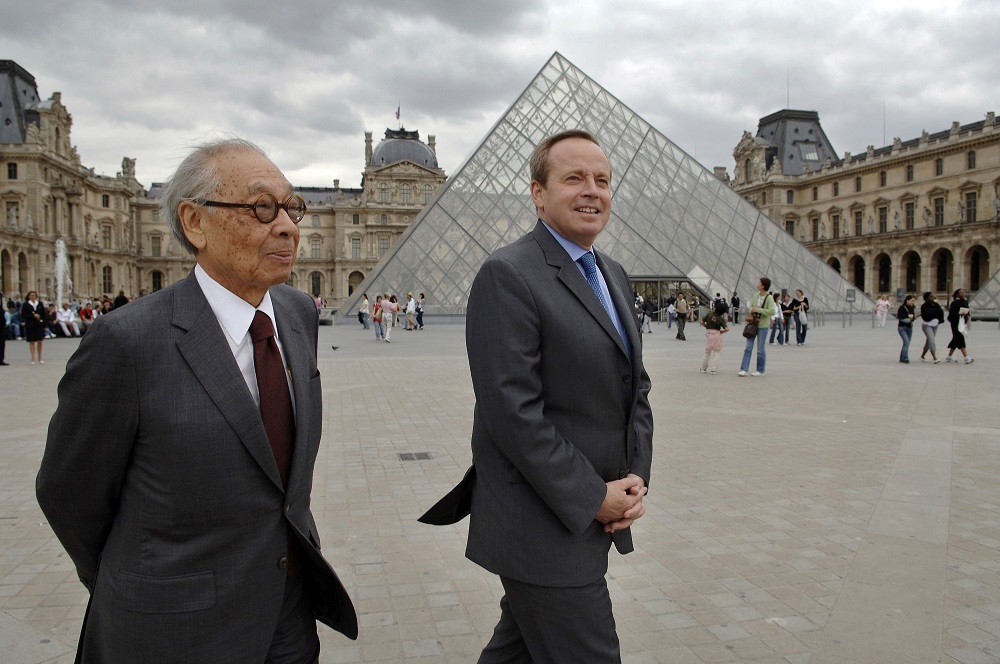I.M. Pei, the world-renowned modernist architect who forged a distinct brand of modern building design with his sharp lines and stark structures, died at his home in New York at the age of 102, his sons’ architecture firm has confirmed on Thursday.
Chinese-born Pei, who worked mostly in the United States, who was the mastermind behind works seen as embracing modernity tempered by a grounding in history. From the controversial Louvre Pyramid in Paris to the landmark Bank of China tower in Hong Kong, are such examples. Pei designed the landmark glass and metal pyramid and three smaller pyramids in the Louvre museum’s main courtyard.
The award-winning architect, whose other notable projects include the Kennedy Library in Boston, Massachusetts, and the Bank of China Tower, Hong Kong, passed away overnight, his son Chien Chung Pei told the New York Times, adding that the family had just had a celebratory dinner to mark his father’s 102nd birthday.
Pei, with his owlish round-rimmed glasses, told The New York Times in a 2008 interview, “Contemporary architects tend to impose modernity on something. There is a certain concern for history but it’s not very deep. I understand that times have changed, we have evolved. But I don’t want to forget the beginning. A lasting architecture has to have roots.”
His work earned the 1983 Pritzker Prize, considered architecture’s Nobel. Of his nearly 50 designs in the United States and around the world, more than half won major awards.
Pei became best known for his modern building designs emphasising natural light, plain surfaces, and sharp angles, such as his landmark East Building at Washington’s National Gallery of Art.
Pei sparked deep controversy with his modernist work on the Louvre pyramid, which was once seen by locals as sacrilege because it was at odds with the classic French Renaissance style of the palace. It was dubbed as an architectural “obscenity.”
At one point, up to 90 percent of Parisians opposed the project. Pei remembered “receiving many angry glances in the streets,” the Japan Times reported.
The Louvre had also been called a “gigantic, ruinous gadget” by a critic, Quartzy reported.
Pei said in a 2010 PBS documentary, “The first year and a half was really hell. I couldn’t walk the streets of Paris without people looking at me as if to say: ‘There you go again. What are you doing here? What are you doing to our great Louvre?”
However, years later, the pyramid is now considered a masterpiece and an icon of the French capital. The monument is also often used as a venue for events ranging from fashion shows to public gatherings and political rallies.
Pei, who was born in China in 1917 to a banker father and artistic mother, arrived in the United States to study architecture at the age of 17. He completed his architecture undergraduate degree in 1940 with the Massachusetts Institute of Technology.
He then undertook a master’s degree in architecture with Harvard University’s Graduate School of Design, which he completed in 1946. He became a naturalized U.S. citizen in 1954.
Pei won the prestigious Pritzker Architecture Prize in 1983 and was cited as giving the 20th century “some of its most beautiful interior spaces and exterior forms … His versatility and skill in the use of materials approach the level of poetry.”
Pie once said in a statement, “Stylistic originality is not my purpose, I want to find the originality in the time, the place, and the problem.”

Leave a Reply